Climate Smart Integrated Rural Development Project, Ethiopia
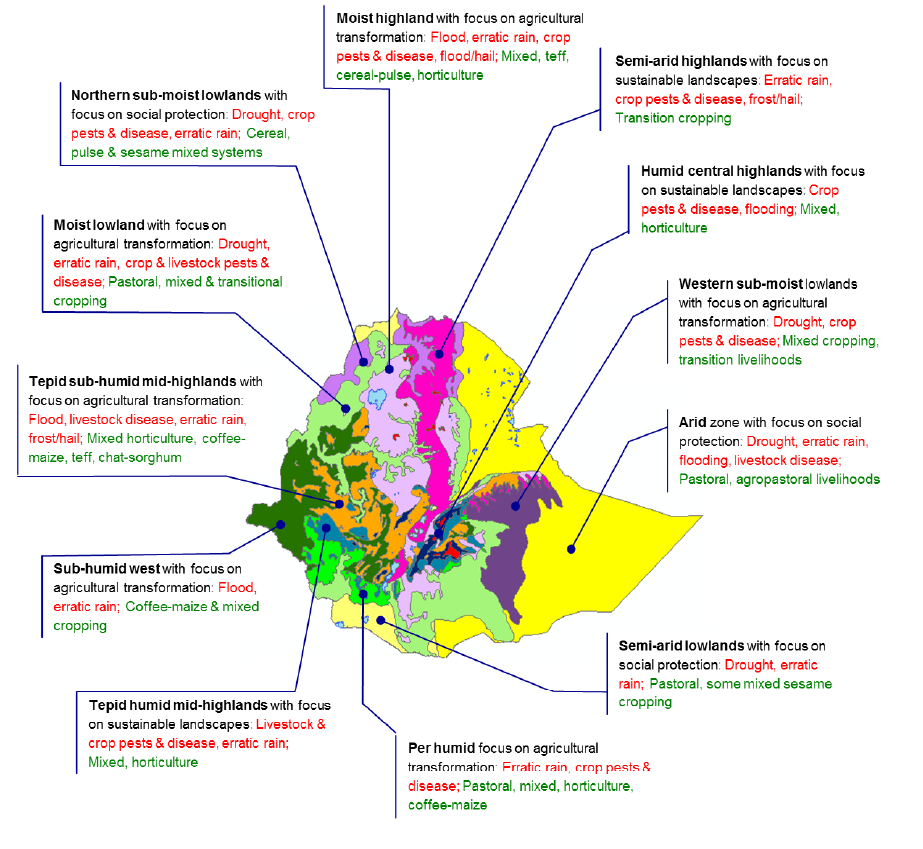
Summary
This solution is being implemented in seven highly vulnerable woredas (districts) of Ethiopia and has by main objective to increase their resilience to recurrent droughts, as well as to reverse the downward spiral of poverty faced by the communities and to increase their productivity in a changing climate.
Of great importance to the Ethiopian economy, the country’s agriculture and livestock sectors are two of the most vulnerable sectors affected by the impacts of climate change. Rainfall variability, soil degradation, droughts and floods are some of the climate-related hazards that, coupled with other stressors such as inadequate access to safe drinking water and lack of access to infrastructure, threaten the well-being of the local population and limit their economic development, deepening poverty levels and food insecurity in some of the already vulnerable woredas.
Through various activities carried out with an integrated water, agriculture and natural resources management approach, it is estimated that the program will increase climate resilience in the implementation areas through adaptation at the local level, while being aligned with and contributing to the implementation of national policies and programs in line with the national Climate Resilient Green Economy strategy.
Five different components have been designed and are being implemented in each of the project locations:
- Component 1: Awareness and ownership of adaptation planning at the local level
- Component 2: Water security
- Component 3. Climate smart agriculture – land – water – forest integration
- Component 4: Climate resilient livelihood diversification
- Component 5. Capacity building, knowledge transfer, and outreach.
Overview
- Location:
- Implementation sites:
- Single country
- Multiple locations
- Mountain region:
- Bale mountains
- Province:
- Oromia, SNNP, Harari, Dirdawa, Tigray, and Amhara regions
- Site locations:
Woredas Adama, Alelitu, Lok Abaya, Harerri (Erer), Wahil cluster, Raya Azobo, and Tenta.
- Solution scale:
- Ecosystem type(s):
- Solution type(s):
- Climate impact(s) addressed:
- Impact time-scales:
- Co-benefits:
- Implementation timeline:
- 2017 - 2022
Solution details
Main beneficiaries & outcomes
The main beneficiaries of the project are 65,360 people located in the seven woredas (in five different regions) of Ethiopia where the interventions are implemented. To ensure that the project targets the most vulnerable communities and households, certain parameters were used for selection, including: households that have not benefited from similar initiatives, household vulnerability status, land ownership status, willingness to participate in the project, female-headed households, and youth groups.
Various economic, social and environmental benefits are expected, such as access to clean water, introduction of ecological and climate-resilient livelihoods, improved irrigation systems, reduced risks from extreme events, food and nutritional security, and improved water filtration and soil quality.
The two main outcomes of the project are:
- Increased capacity to manage current and future drought risks through improved adaptation planning and sustainable management of agro-ecological landscapes.
- Enhanced and secure access to potable water supply, and small-scale irrigation in drought affected areas.
Planning and implementation
The Ministry of Finance and Economic Cooperation (MoFEC) of the Federal Democratic Republic of Ethiopia was the implementing entity for this project. Implementation coordination is in charge of the Climate Resilient Green Economy (CRGE) Facility, while the Ministries of Agriculture and Natural Resources (MoANR), Livestock and Fisheries Development (MoLF), Water, Irrigation and Electricity (MoWIE), and Environment, Forests and Climate Change (MEFCC) are the execution entities. A Steering Committee coordinates field actions at the woreda level.
Following the approval of the project proposal by the Adaptation Fund board in July 2017, the CRGE organized a series of initial workshops for project stakeholders at the federal, regional and local levels. The first three workshops were designed to familiarize project implementing agencies with the project objectives, components, activities, budget, financial and implementation arrangements, and to prepare detailed regional work plans for the implementation period. The fourth and final workshop marked the start of project implementation, and was followed by the signing of a Memorandum of Understanding between MOFEC, the Bureaus of Finance and Economic Development (BOFED) and the Federal Implementing Ministries (i.e. MOANR, MOWIE, MOLF, MEFCC).
Finance
This project is being financed by the Adaptation Fund in the form of a Grant. The next table describes the allocation of the total cost within the different components:
|
Component 1 |
US$ 367,510 |
|
Component 2 |
US$ 4,736,667 |
|
Component 3 |
US$ 1,590,227 |
|
Component 4 |
US$ 527,371 |
|
Component 5 |
US$ 1,799,288 |
|
Project execution cost |
US$ 465,405 |
|
Total project cost |
US$ 9,486,467 |
|
Implementing Entity Project Cycle Management Fee |
US$ 501,443 |
|
Grant Amount |
US$ 9,987,910 |
Source: Adaptation Fund, 2021.
For all interventions, cost-effectiveness and cost-benefit analysis of options were executed, considering economic, social and environmental consequences.
Innovation
The project design incorporates in its components several elements that are considered innovative and that were drawn from the latest adaptation literature, including the targeting of low-impact adaptation options, the adoption of an interactive climate risk management framework (recommended by IPCC AR5), and the advancement of the mainstreaming concept by seeking to incorporate climate-smart planning into existing local development plans. Moreover, the project also introduces the concept of climate-smart agriculture (CSA) from the perspective of integrated land-water-forest solutions.
Performance evaluation
Following guidance from the Adaptation Fund, as well as the CRGE M&E manual, a monitoring and evaluation (M&E) system has been designed into the plans for this project to ensure that the project maintains a simple and interactive monitoring setup that allows for both reporting and learning at all levels on a regular basis. M&E activities will be managed by the Project Management Unit and will be supported by staff members at the local level. For each of these activities, a budget and a responsible person has already been allocated.
In addition, an annual performance evaluation and an annual follow-up mission will also be conducted, and a mid-term and final evaluation by external consultants is planned.
Although the project is nearing completion, reports on the evaluation results are not yet available.
Long term project sustainability and maintenance
The sustainability of this solution is sought through the strong training and learning elements that have been incorporated into the project design, supported at the same time by its robust monitoring and evaluation system.
Moreover, the involvement of local communities in critical decisions will not only increase their commitment to making the solutions work, but will also increase their ownership and ensure their continuity after the project is completed. In fact, in the specific case of rural infrastructures, it has been estimated that their sustainability depends to a large extent on the participation and management of the users. Therefore, as part of the project components, community members will be trained in the basic maintenance of technologies such as hand pumps and solar panels. Meanwhile, government institutions at the federal, regional and local levels will provide technical support after project completion and, in the long term, will also allocate a budget, as climate resilience initiatives are being integrated into local development plans.
Capacities for design and implementation
Knowledge
One of the main purposes of this project is to improve knowledge on climate change related impacts and on new opportunities for more resilient livelihoods. To this end, a component has been designed explicitly for knowledge generation and learning, which is intended to contribute to building resilience in the country and to help improving future approaches. In addition to the already regular collaboration of key ministries with academic and research institutions, engagement will be established with other entities and research communities to conduct relevant development-oriented research. Similarly, under Component 1, improved climate and hydrological monitoring and integrated water information and management options will also be explored. Furthermore, for the benefit of the local population, several awareness and education campaigns are also carried out using various communication tools.
During project planning, key information on risk profiles of the implementation areas provided by the ongoing Woredas Disaster Risk Profiling Program (WDRP) undertaken by the national government was very advantageous.
Technology
The introduction of innovative technological inputs is an important feature that was useful for the various solutions offered to local communities. Their introduction in the different woredas served as a means of decoupling the dependence of farmers and villagers on other less efficient agricultural or water supply options, thus helping to increase their overall productivity and improving their adaptive capacity.
Political / Legal
The project has strong political support at the federal, regional and woreda levels, and motivation for its development was strongly triggered by the national vision of building a low-carbon climate resilient country by 2025. The solution is aligned with numerous national and local policies, strategies and plans relevant to the development, agriculture, disaster risk reduction, water, forests, climate change and environmental management sectors. At the national level, it is consistent with the Constitution of the Federal Democratic Republic of Ethiopia (FDRE) which provides the overarching framework for sustainable development, planning, and implementation in the country, and envisions to achieve a middle-income status by 2025.
Furthermore, the existence of the Climate Resilient Green Economy Strategy (CRGE), which was created in 2011 is also particularly important to the success of this project. Such strategy includes various recommendation to address several of the problems addressed by this project and have been adopted in the formulation of the components.
Institutional
A very useful aspect during the management and coordination of the activities of this project is the extensive experience and implementation capacity of the executing entities. Although woreda facilitators and project, technical and financial officers have been hired, the fact that existing CRGE staff members and national and subnational government officials with extensive experience and capabilities were included in the management and implementation structure is considered beneficial. For example, MoANR has extensive experience in implementing large-scale donor and government-funded projects, as well as in collaborating with various stakeholders and development partners for national priorities.
Nevertheless, to complement the already strong stakeholder organizational structure, the project also incorporates organizational, systemic and human capacity building activities under the “Enabling Environment” component. Tailor-made training courses and workshops have been organized, and tools, equipment and other facilities are being made available.
Socio-cultural
Local community members are actively involved in the planning and implementation of most of the measures included in the project. During the preparation phase, for example, consultations were held with women and men in the woredas to identify challenges and priority needs, and subsequently to understand available livelihood options and promote innovative adaptation practices. Likewise, local community development officers and local community advocates have been implicated. This engagement is supported by the participatory and gender-sensitive approach that seeks more active participation of women.
In most cases, awareness-raising and training activities were carried out to improve both people’s understanding and skills in both technical and theoretical aspects. The aim is, to a large extent, for this involvement to help ensure the continuity of the solutions in the long term.
Outlook & Scalability
Barriers and adverse effects
In accordance with the CRGE Operations Manual, the various risks that the implemented solutions could potentially encounter were initially identified during the design of the project, determining their risk levels as well as the mitigation measures that would help minimize, eliminate or prevent them. These barriers include, among other things, information asymmetry (the fact that smallholders are not well informed of the risks, or of the practices and technologies available to help reduce them), risk aversion (which limits smallholder investments), limited ability of smallholders to pay, and limited supply of technologies and inputs. However, no information is yet available to establish whether these barriers have been successfully overcome.
On the other hand, the Covid-19 pandemic was a problem that limited the completion of the project on schedule. Nonetheless, this was solved by requiring a project extension to the Adaptation Fund, now moving the closing year to 2022.
Transformation and future outlook
Given the multifaceted effects of climate change-induced hazards on rural livelihoods and environment, this project seeks to support a fundamental shift in climate adaptation by addressing climate impacts in selected woredas from a holistic set of integrated activities and by triggering sustainable transformation through strong capacity building and learning elements that increase the resilience of highly vulnerable communities.
Potential for upscaling and replication
At this time, it is unknown whether this solution or any of its components have been or are being replicated in other regions of Ethiopia or elsewhere. However, replication has been one of the intentions of the project since the planning phase, so the capacity building, monitoring and evaluation, and learning elements have been designed with a view to drawing important lessons that can later be applied to other woredas.
Finally
Acknowledgments
The description of this solution was prepared based on the official project description and project proposal documents published by the Adaptation Fund through its official website and available at https://www.adaptation-fund.org/project/climate-smart-integrated-rural-development-project/ . The solution description reflects the views of the authors and not those of the Adaptation Fund, the Ministry of Finance and Economic Cooperation of the Federal Democratic Republic of Ethiopia or any other government entity or project partner. Julia Aguilera Rodriguez was responsible for completing the survey information, while Simon Allen reviewed the solution description.
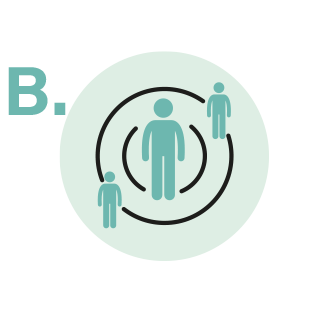
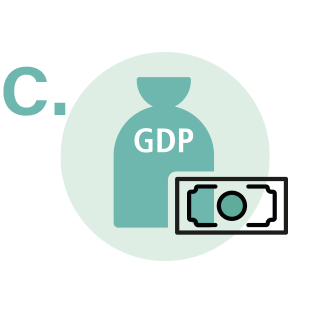
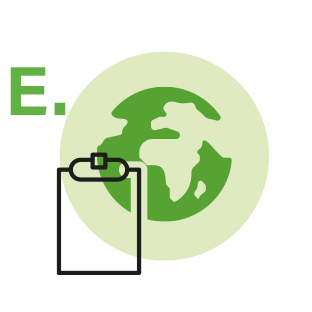

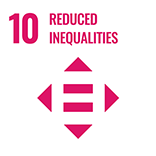




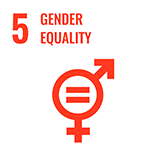
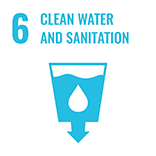

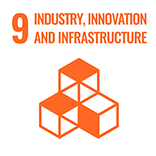
(0) Comments
There is no content